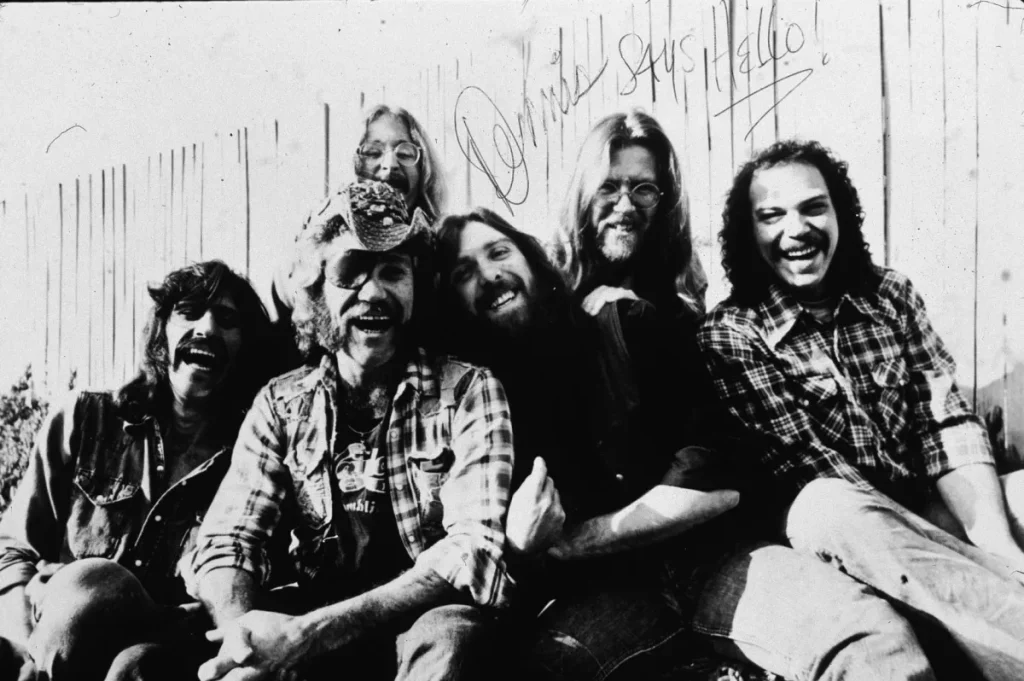
A Satirical Spin on Stardom: Dr. Hook’s “Cover of the Rolling Stone”
Ah, to be young again, leafing through the glossy pages of Rolling Stone, dreaming of seeing your favorite artists grace its iconic cover. For many of us, that magazine was the bible of rock and roll, a testament to who truly mattered in the chaotic, vibrant world of music. And then, in 1973, along came Dr. Hook & The Medicine Show with a song that wasn’t just catchy, it was downright cheeky: “Cover of the Rolling Stone.” This witty, self-referential tune, a brilliant piece of satire penned by the incomparable Shel Silverstein, soared to number 6 on the Billboard Hot 100 chart shortly after its release, becoming an instant classic and, ironically enough, landing Dr. Hook themselves on the cover of Rolling Stone that very year. It was a moment of pure, delightful irony, a band poking fun at the very aspiration they inadvertently achieved.
The story behind “Cover of the Rolling Stone” is as engaging as the song itself. Shel Silverstein, a man of boundless creativity known for his children’s books, poetry, and songs, was reportedly approached by Rolling Stone founder Jann Wenner with a challenge: write a song about wanting to be on the cover of the magazine. Silverstein, with his characteristic wit, took the prompt and turned it on its head, crafting a narrative that lampooned the excesses and often superficial desires associated with rock stardom. He perfectly captured the yearning for recognition, not necessarily for artistic merit, but for the tangible symbol of success – that coveted magazine cover. The lyrics paint a vivid, humorous picture of a band dreaming of the perks that come with such fame: “We’re big rock stars, I guess that’s our fate / We’ll be on the cover of the Rolling Stone / A picture of us looking ugly and stoned.” It was a bold, self-deprecating move, especially for a band still carving out their niche.
But beyond the humor and the meta-narrative, “Cover of the Rolling Stone” carries a deeper meaning. It’s a playful yet poignant commentary on the music industry’s obsession with image and celebrity. In an era when bands were often meticulously crafted and marketed, Dr. Hook, with their eccentric personalities and unconventional stage presence, were already somewhat outsiders. This song allowed them to embrace that outsider status, to mock the very system they were a part of. It speaks to the universal human desire for validation and recognition, albeit through a highly specific and exaggerated lens. The song’s success was a testament to its relatability; who hasn’t, at some point, dreamed of achieving a visible marker of success, whatever that may be? For musicians, especially those striving for mainstream acceptance, the Rolling Stone cover was, and still largely is, a pinnacle.
Listening to “Cover of the Rolling Stone” now, it’s impossible not to feel a wave of nostalgia for that golden age of rock and roll. The song’s laid-back, almost conversational delivery, coupled with its clever lyrics, transports you back to a time when music felt a little more raw, a little more authentic, and certainly a lot more fun. It reminds us of an era when bands like Dr. Hook could burst onto the scene with a song that was both a critique and a celebration of the rock star fantasy. The band, fronted by the distinctive eye-patched Ray Sawyer and the charismatic Dennis Locorriere, truly embodied the spirit of the song, living out a parody of fame while simultaneously achieving it. Their story, intertwined with this iconic tune, serves as a delightful footnote in music history, a reminder that sometimes the most profound statements are made with a wink and a smile. It’s a song that continues to resonate, not just for its humor, but for its timeless observation on the nature of ambition and the often-absurd world of celebrity. It’s a track that, much like a well-worn vinyl record, only gets better with each listen, bringing back memories of a simpler time when rock and roll was king and a magazine cover could feel like the whole world.